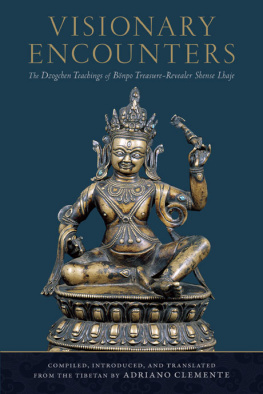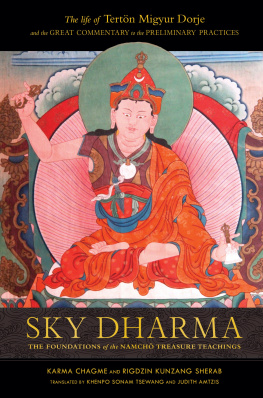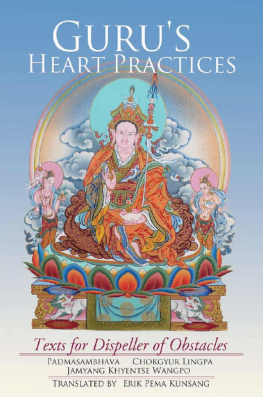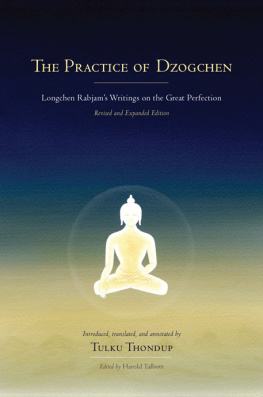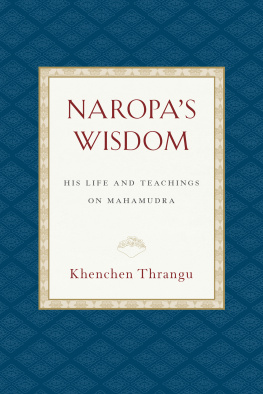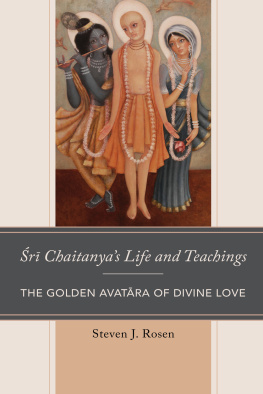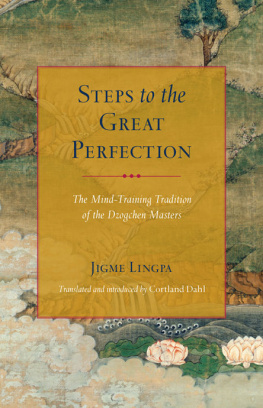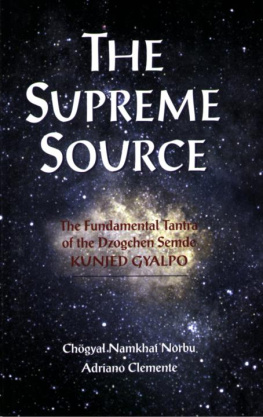Sign up to receive weekly Tibetan Dharma teachings and special offers from Shambhala Publications.

Or visit us online to sign up at shambhala.com/eshambhala.
Visionary Encounters

The Dzogchen Teachings of Bnpo Treasure-Revealer Shense Lhaje
COMPILED, INTRODUCED, AND TRANSLATED FROM THE TIBETAN BY
Adriano Clemente

Snow Lion
An imprint of Shambhala Publications, Inc.
4720 Walnut Street
Boulder, Colorado 80301
www.shambhala.com
2016 by Adriano Clemente
All rights reserved. No part of this book may be reproduced in any form or by any means, electronic or mechanical, including photocopying, recording, or by any information storage and retrieval system, without permission in writing from the publisher.
LIBRARY OF CONGRESS CATALOGING-IN-PUBLICATION DATA
Names: Clemente, Adriano, compiler, translator. | Gshen-gsas, Lha-rje, 12151268? Works. Selections. English.
Title: Visionary encounters : the Dzogchen teachings of Bnpo treasure-revealer Shense Lhaje / Compiled, introduced, and translated from the Tibetan by Adriano Clemente.
Description: First edition. | Boulder : Snow Lion, 2016. | Includes bibliographical references and index.
Identifiers: LCCN 2015048411 | EISBN 9780834840324 | ISBN 9781559394321 (paperback)
Subjects: LCSH: Rdzogs-chen. | Gshen-gsas, Lha-rje, 12151268?Teachings. | BISAC: RELIGION / Buddhism / Tibetan. | RELIGION / Buddhism / Sacred Writings. | RELIGION / Buddhism / Rituals & Practice.
Classification: LCC BQ7662.4 .C53 2016 | DDC 294.3/420423dc23
LC record available at http://lccn.loc.gov/2015048411
This book contains diacritics and special characters. If you encounter difficulty displaying these characters, please set your e-reader device to publisher defaults (if available) or to an alternate font.
Look at your mind, and you will see everything!
Search inside you, and you will find everything!
Take hold of your natural place, and you will reach the land of bliss!
THE DAKINI WDEN BARMA TO SHENSE LHAJE
Were it not better to believe Vision with all our might and strength, tho we are fallen and lost?
WILLIAM BLAKE, THE GHOST OF ABEL
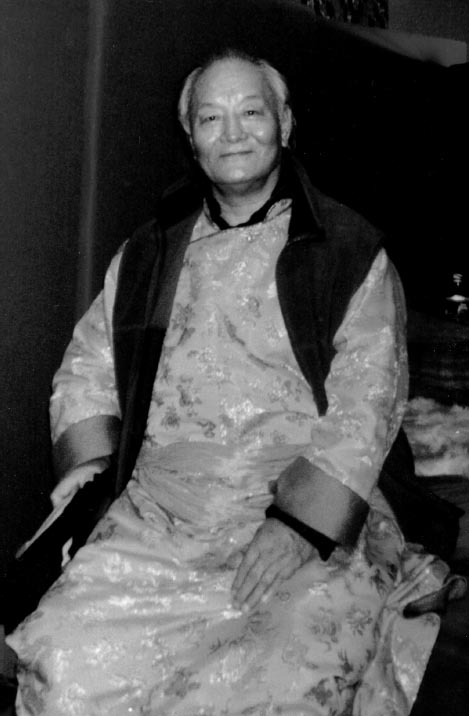
CHGYAL NAMKHAI NORBU, DZOGCHEN MASTER AND AN AUTHORITY ON TIBETAN CULTURE AND HISTORY.
PHOTO TAKEN BY NINA ROBINSON IN 1994. USED WITH PERMISSION.

In 1981, when I was a student at the Istituto Universitario Orientale of Naples, Italy, my Dzogchen master Chgyal Namkhai Norbu, at that time professor of Tibetan Language and Literature, suggested for my graduation thesis that I study a Dzogchen text from the Bn tradition. He chose the Trenpa Serdam (Dran pa gser gdams) or The Golden Teaching of Trenpa Namkha, a cycle of teachings rediscovered by the thirteenth-century Bnpo Shense Lhaje, an important tertn or treasure-revealer in this tradition. In particular he pointed out the text called Advice from Eighty Dakinis, which he found especially interesting. I had no idea, apart from the need to research into the Dzogchen teaching in the Bn tradition, the reason why he chose this particular text, which is little known in comparison to famous cycles such as The Oral Transmission of Shang Shung (Zhang zhung snyan rgyud). Later I came to understand that Chgyal Namkhai Norbu himself has a rich visionary life in his dreams of clarity, through which he has received an important cycle of Dzogchen teachings. This for me became a link for appreciating even more the extraordinary life-stories and teachings of Shense Lhaje, and for relating them to the dream experiences of my master.
Chgyal Namkhai Norbu, a pioneer in spreading the Dzogchen teaching in the West and an accomplished scholar in all the fields of Tibetan culture, started to inquire into the origins of Tibetan culture in the early seventies, identifying in the ancient Bn tradition and the Shang Shung kingdom
When he toured India and Nepal in 1978 with some Italian assistants to shoot Arura, a documentary film on Tibetan medicine, he had the chance to visit the Bnpo settlement and monastery Menri Sarpa in Dolanji, Himachal Pradesh. There he spent a few weeks with Yongdzin Lopn Tenzin Namdak, the highest authority in the Bn tradition, and through this connection he started to send some of his students to this monastery in order to research the Bnpo teachings and traditions.
In 1981, two of my colleagues, the Tibetologists Giacomella Orofino and Enrico DellAngelo, left for the Bnpo monastery, where they spent some months studying with Lopn Tenzin Namdak. In February 1982 I also left for India, and after a short visit to holy places such as Varanasi and Bodhgaya, I headed for the Bnpo settlement of Dolanji. Living in India was an abrupt change from my life in Naples, although Naples was and still is the most Asian among Italian cities. When I reached the monastery, I was welcomed by the Khenpo, H.H. Sangye Tenzin Jongdong, who kindly assigned me a monks room. Life in the monastery was quiet and absolutely frugal. No toilet, and no potable water to drink. Mineral water did not exist in India at that time.
After the first few days, I got accustomed to the place and the people, and was warmly received by Lopn Tenzin Namdak, who was busy with the ongoing sacred dances after the Losar celebrations, and advised me to practice meditation for some days. When the dances were over, he called me and said, Namkhai Norbu has written to me that you should study the Trenpa Serdam. Get the text from somebody and we will start!
When I obtained the text from a monk living nearby and brought it to Lopn, he opened it slowly and said, Oh! There is a section that tells of the visionary accounts of Shense Lhajeit is very nice, and we shall read it together!
From that day, every afternoon around two oclock Lopn, on the way to the monastery, would stop and knock at my room and say, Signora! (lady, but meant to be signore, gentleman). Then he would sit on my bed close to me and read one or two pages of the text called Visionary Encounters with Knowledge-Holders and Dakinis. He did not allow me to record it, so I had to write everything down while he spoke. This went on for about two months. The rest of the time I would review the translation and transcribe, with the help of a monk, the difficult cursive ume script of this book, containing many duyig or abbreviated words, into the letters of uchen (capital script).
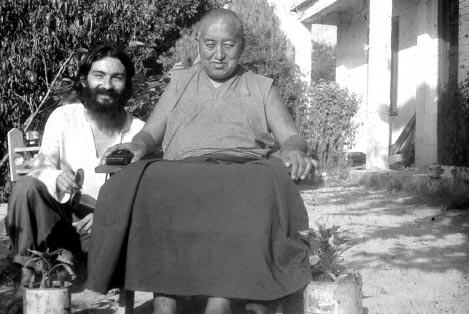
LOPN TENZIN NAMDAK AND ADRIANO CLEMENTE.
PHOTO TAKEN BY TENZIN WANGYAL AT THE BNPO SETTLEMENT OF DOLANJI, HIMACHAL PRADESH, IN FRONT OF LOPNS HOUSE, AUGUST 1982.
During those months I became acquainted with Lopns simple way of living and his down-to-earth manner of communicating, displaying some of the noblest qualities of a human being: humbleness and simplicity. He used to teach in the monastery in the mornings, while in the afternoons he would stay in his room or outside in the garden, receiving occasional visitors or people seeking help or advice. I started to spend much time with him and his closest students at his house. He would often joke with us and tease me about the stories that I told about my life in Italy, and since I was wearing a beard like yaks hair, he gave me the affectionate nickname Gyari Pusob (the shaggy bearded one).
Next page
